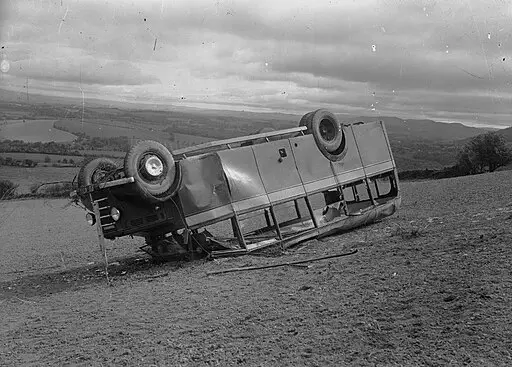Misadventure implies a risky undertaking leading to an unfortunate outcome. Accidental death results from an unforeseen event without intentional harm.
TL;DR Misadventure Vs. Accidental death
By definition, misadventure refers to an unfortunate incident that occurs due to a person’s own actions or decisions.
Accidental death is an unexpected demise resulting from external factors beyond one’s control. While both terms involve unintentional events leading to someone’s passing, there are key distinctions that set them apart.
Examples of misadventure can include cases where individuals engage in risky activities such as extreme sports without proper precautions, driving recklessly or under the influence of alcohol, or even taking drugs irresponsibly. In these instances, the outcome may have been avoidable had different choices been made.
What is Misadventure?

Misadventure refers to an unfortunate incident or mishap that occurs unexpectedly, resulting in harm, injury, or even death. It is often associated with a series of events that lead to an unintended outcome. Unlike intentional acts or deliberate negligence, misadventures typically involve unforeseen circumstances and are not driven by malicious intent.
In the legal context, misadventure can be seen as a term used to describe accidents that happen during activities where there is some level of risk involved. This could include outdoor adventures like hiking or extreme sports, as well as situations where individuals find themselves in dangerous environments beyond their control.
When it comes to determining liability in cases of misadventure, factors such as negligence, duty of care, and foreseeability play a crucial role. The key distinction here is that misadventures are generally considered unintentional occurrences rather than deliberate actions.
What is and Accidental Death?

Accidental death is a term that refers to an unexpected and unintentional death caused by external factors. It occurs when someone dies as a result of unforeseen circumstances or events. Unlike natural causes or intentional acts, accidental deaths are not planned or deliberate.
Accidental deaths can happen in various ways, such as car accidents, falls, drownings, fires, and drug overdoses. These incidents occur suddenly and without any premeditation. Accidents can occur due to negligence, carelessness, human error, equipment failure, or environmental factors.
What distinguishes accidental death from other types of deaths is the element of chance involved. The outcome is unintended and could have been avoided if certain precautions were taken or if circumstances had been different.
When it comes to legal matters surrounding accidental deaths, determining liability can be complex. Insurance claims and compensation may depend on whether the incident was truly accidental or if there was any negligent behavior involved.
Misadventure Vs. Accidental death – Key differences
| Aspect | Misadventure | Accidental Death |
|---|---|---|
| Nature of Incident | Involves a risky undertaking or adventure. | Occurs due to an unforeseen, unintentional event. |
| Intent or Purpose | Implies an element of choice or risk-taking. | Lacks intentional harm, no deliberate actions involved. |
| Risk Involvement | Often associated with voluntary, risky activities. | Results from unforeseen circumstances or accidents. |
| Outcome | Unfortunate outcome due to a risky venture. | Unintended fatality arising from an accidental event. |
| Common Examples | Sporting accidents, adventurous activities. | Car crashes, falls, incidents with no deliberate harm. |
| Legal Implications | May involve legal scrutiny based on the nature of the activity. | Typically investigated to rule out foul play or negligence. |
| Preventability | Often considered preventable by avoiding risky behaviors. | While some accidents are preventable, others are truly unforeseeable. |
| Causation Focus | Focus on the choice to engage in a risky activity. | Emphasis on the accidental and unforeseen nature of the event. |
| Use in Legal Context | May be used in legal contexts to assess liability. | Investigated to determine if there was any criminal intent or negligence. |
| Perception of Control | Implies a level of control or decision-making in the outcome. | Recognizes the lack of control in the accidental occurrence. |
Examples of Misadventure and Accidental Death
Examples of Misadventure:
Adventure Sports:
A person engaging in extreme sports, such as base jumping or rock climbing, where the inherent risks are high.
Exploration Mishaps:
Getting lost or encountering danger while exploring unfamiliar terrain without proper preparation.
Reckless Behavior:
Taking unnecessary risks, like speeding on a motorcycle or attempting dangerous stunts, leading to an unfortunate outcome.
Risky Activities:
Participation in activities like skydiving or free solo climbing without adequate training or safety precautions.
Dangerous Hobbies:
Engaging in activities with a high potential for harm, such as experimenting with explosives or untrained use of firearms.
Examples of Accidental Death:
Car Accidents:
A fatal car crash resulting from unforeseen circumstances, like adverse weather conditions or mechanical failure.
Slips and Falls:
Falling down a staircase or slipping on a wet surface, leading to accidental injuries that prove fatal.
Medical Complications:
Unintended complications during medical procedures or treatment, resulting in a patient’s accidental death.
Choking Incidents:
Accidentally choking on food or small objects without any intentional harm.
Natural Disasters:
Death resulting from natural disasters like earthquakes, floods, or tornadoes, where the event is beyond human control.
It’s important to note that the classification of an incident as misadventure or accidental death can depend on various factors, including intent, risk awareness, and the context of the situation. Legal and investigative authorities may assess these factors when determining the nature of an unfortunate event.
Image Credits
Featured Image By – Percy Benzie Abery, CC0, via Wikimedia Commons
Image 1 By – Cdang, CC BY-SA 4.0, via Wikimedia Commons
Image 2 By – BRAHIM DJELLOUL, CC BY-SA 4.0 , via Wikimedia Commons









